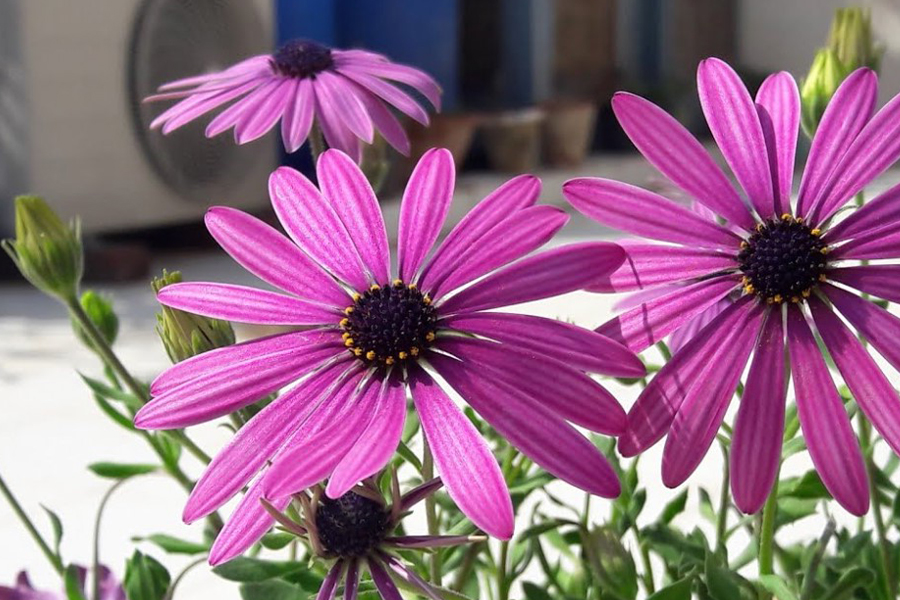
Whether you have just started out in the gardening world or have had success with other plants in the past, you might be interested in growing African daisies. There are a few key factors to know about these flowers, including how to care for them, what they bloom into, and how to get them to grow.
african daisy
Taking care of African Daisies is simple. This is a plant that can be grown as an annual or perennial in many zones. It is hardy, drought tolerant and provides colorful blooms.
The first step in taking care of African Daisies is to choose a site that is sunny and has good air circulation. You also want to make sure that the soil is well-drained. The soil should be slightly acidic, and it is best to keep it at a pH of 6.0 to 7.0. You will also need to fertilize monthly.
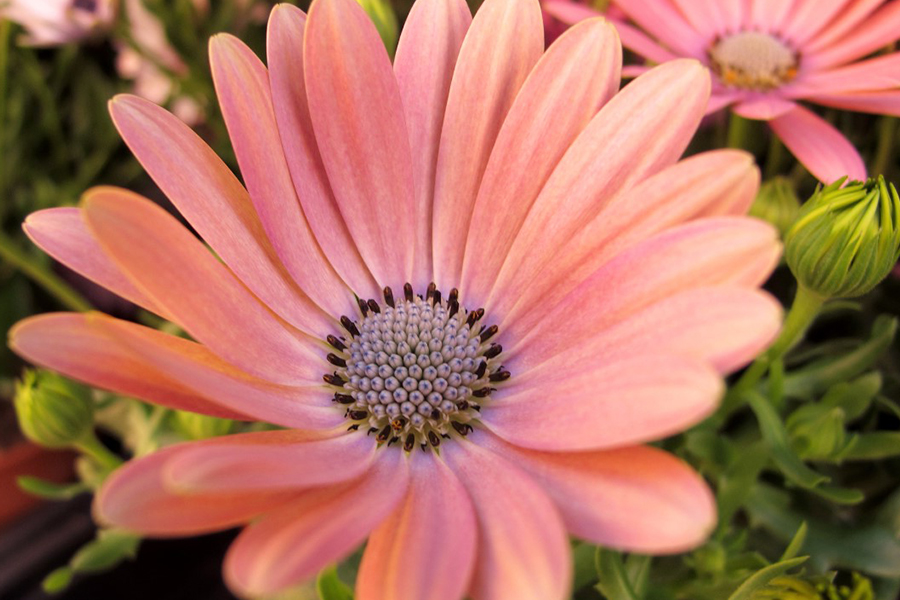
You can grow African daisies by planting seeds or transplanting. When planting seedlings, it is important to space them at least 25 cm apart. Then, lightly cover them with soil and water. If the soil is dry, it is better to use a drip system to water them.
You should also trim the stems of young African daisies in order to promote growth. This will encourage a bushy plant that is sturdy. You can do this by pinching the stems, removing the flower stems to the next set of leaves.
african daisy Care
Having an African Daisy flower on your window sill is a beautiful sight in the spring. However, you should remember that African Daisies require regular care to thrive. In order to keep your plant healthy, you must take the necessary steps to prevent it from becoming a victim of fungal diseases. You can do this by preventing water droplets from splashing onto the plant’s leaves and roots.
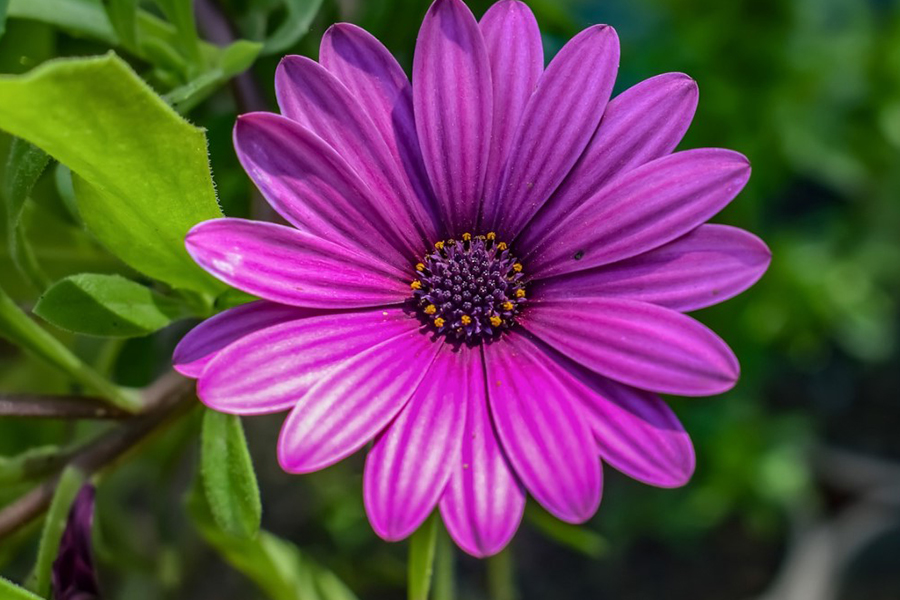
- In addition to providing extra water, you must also ensure that your African Daisy is growing in a well- drained soil. Soggy or parched soil can lead to root rot, and the plant will become stunted. You should also be cautious about fertilizing your African Daisy too often, as this may cause excess foliage growth.
- Another problem is insects. These can attack your plant and cause yellowing or suck sap from it. You can control this infestation by using insecticidal soap or pyrethrins, or by spraying the plants with diatomaceous earth.
- Fungal diseases are also a concern for your African Daisy plant. They can result in damaged foliage or even damaged flowers. These fungal problems can be prevented by using fungicides. If your African Daisy is not growing properly, you may want to trim it back in the late summer or early fall.
african daisy meaning
Whether you want to grow African daisy in a garden or pot, you need to know how to
take care of your plant. You will need to fertilize, water, and grow your plant correctly to ensure beautiful flowers.
One of the most important things you will need to do is to ensure that your African daisy gets enough nitrogen. This will allow the flower to bloom for a longer time.

You will also need to make sure your soil is properly draining. If your soil is soggy or puddled, it can damage the roots and cause the plant to rot. You can also use fungicides to prevent fungus from growing in your plant.
Using a fertilizer that is specifically designed for blooming plants is the best way to ensure your African daisy gets the nutrients it needs to thrive. It is recommended that you use a slow release fertilizer. You should give your plant about an inch of water every week.
You can also trim the African daisy to enhance the shape of your plant. However, you should be careful not to cut too much off. You want to encourage fresh new growth.
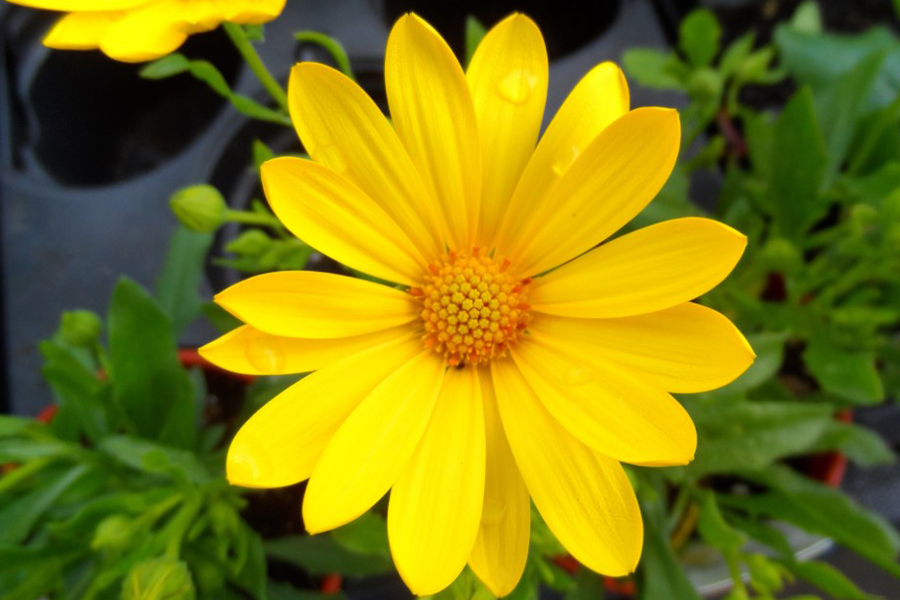
Types of African Daisy
- Originally native to South Africa, African Daisies are drought-resistant plants that produce flowers throughout the growing season. They are also popular in perennial gardens. They are easy to grow, require minimal maintenance, and they can withstand hot, cold, or wet weather.
- When planted in your garden, African Daisies require plenty of sunlight. They can tolerate light shade, but they will not bloom as often. They can also tolerate wetness, but they will not thrive if they have a lot of water. They do best in full sun, but they can also tolerate partial shade.
- African Daisies should be planted in a hole that is about 10 inches deep. They do not do well in clay soils, so make sure to choose a site that has good drainage. They can be grown in a container, but they have higher watering requirements.
- After planting, keep the soil moist, but not wet. Use a balanced slow-release fertilizer. If the plant begins to grow too large, prune it. A good rule of thumb is to cut it back to three or four leaves.
Propagating African Daisies
Whether you are growing African daisies as a ground cover or as a single flowering plant, there are several things you need to know about the care of this popular perennial. They grow well in a variety of soils, but prefer a slightly acidic soil with a pH range of 6 to 7.0. They can tolerate partial shade and are very drought tolerant once they are established. They are a good choice for a pot or container garden.
While most African daisies are grown outdoors in the summer, they can also be successfully grown indoors. They can be propagated from seeds or by cuttings. They are also highly resistant to many pests and diseases, making them ideal for growing as an ornamental plant.
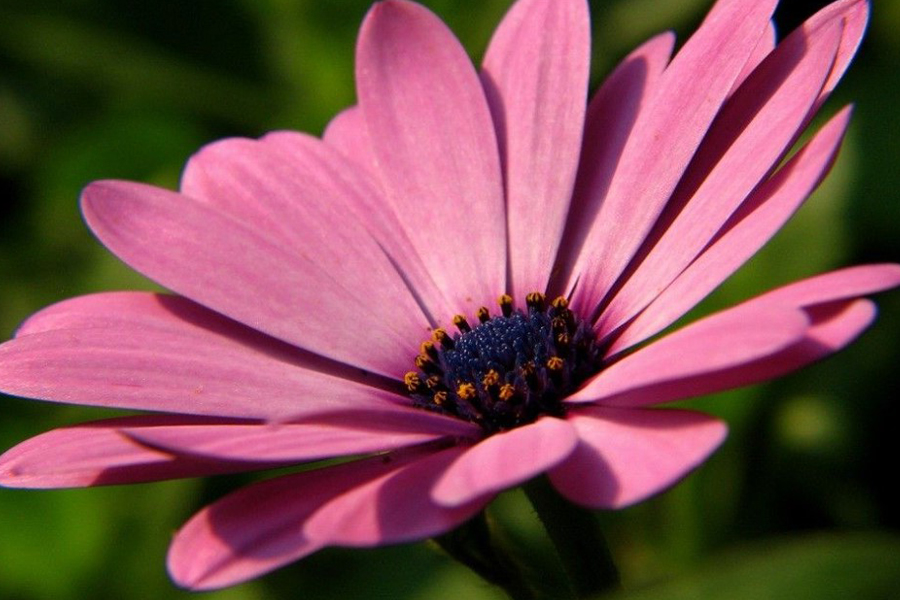
When planting, it is important to provide adequate air circulation to ensure healthy growth. African daisies grow best in sun, but can tolerate light shade. They should be planted in a large container. They prefer a coarse substrate that can drain easily.
If possible, use vermiculite or ceramic shards for the best coarse drainage.
How to Get African Daisies to Bloom
Getting African Daisy to bloom can be easy, but they do need some care. The flowering plants can be planted in pots or in a large decorative container. The plant can grow up to two feet tall. It can also be propagated through cuttings.
- The African Daisy flowers have buttery yellow centers. The flowers are spoon-shaped and can be about 2 to 4 inches wide. They form a rosette. The flower stems are long and branching.
- When the flower stems die off, the leaves grow in on the sides of the plant. They provide an insulating layer for the roots of the African Daisy. This explains why they are a good choice for containers. They are also resistant to most pests.
- They are best grown in sandy soils, and they do not like waterlogged substrates. It is advisable to water them once a week. If the weather is hot and dry, they may need an additional amount of water.
- African Daisies can be propagated by softwood cuttings or seeds. You can purchase Osteospermum from horticulturists and online retailers.
How big does African Daisy get
During the summer, the African Daisy plants produce many beautiful flowers. These can be in a variety of colors, but most often they are solid colored.
The plant can grow up to three feet in height. It grows best in a full sun location with good air circulation and good soil drainage. It is also drought resistant. During the summer, it should receive one inch of water every week. In the winter, it may need a little more.
When planting, it is recommended that you space the seedlings at least 12 inches apart. The seedlings are usually ready to transplant after two weeks. It is best to dig holes at least 10 cm deep, and gently backfill the hole. The plant should be planted in a pot or container with a large diameter.
When it comes to care, the African Daisy is easy to grow. It is a plant that is not poisonous and is immune to most pests. It is also very easy to propagate. It can be grown from softwood cuttings.

Are African daisies easy to grow
Unlike most annual flowers, African daisies do not require a great deal of care. They can grow in full sun or shade. They are drought -tolerant and are resistant to many pests. They can grow in chalky, sandy or acidic soil. They are not poisonous to cats, dogs or other animals.
African daisies can be sown in potting soil or planted directly in the garden from mid-May. They do not require a lot of fertilization, and only need watering on a regular basis. They are also quite resistant to fungal diseases. They are best grown in a sunny location, with good air circulation. The plant will bloom in 50-60 days.
African daisies are easy to propagate, either by seed or by softwood cuttings. To re-grow, you can cut the cuttings, place them in a container with coco husk, and plant them in the ground.
To get the best results, African daisies should be sown in the spring or early summer.
They will bloom in about 50-60 days, but can take longer if they are kept in a pot.
